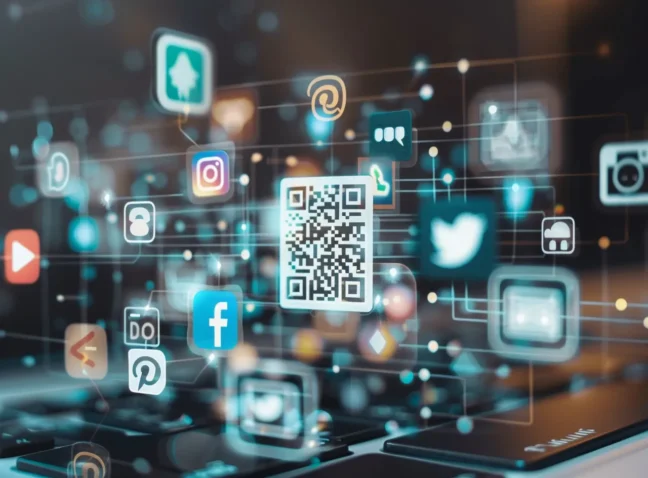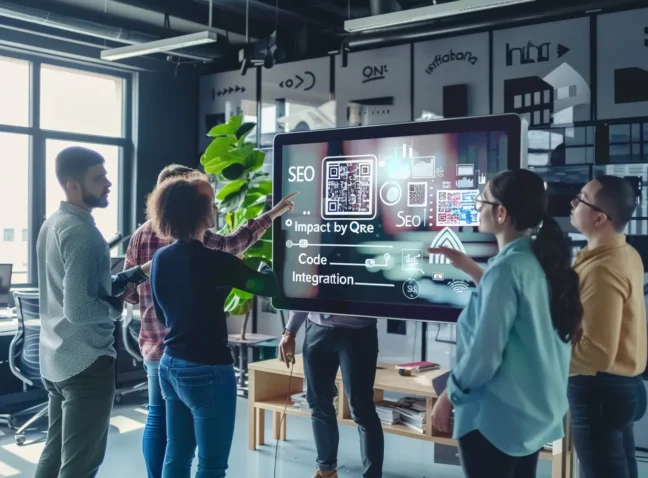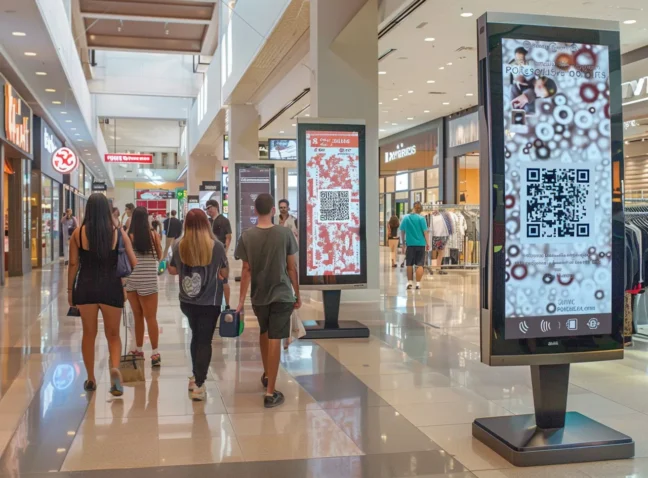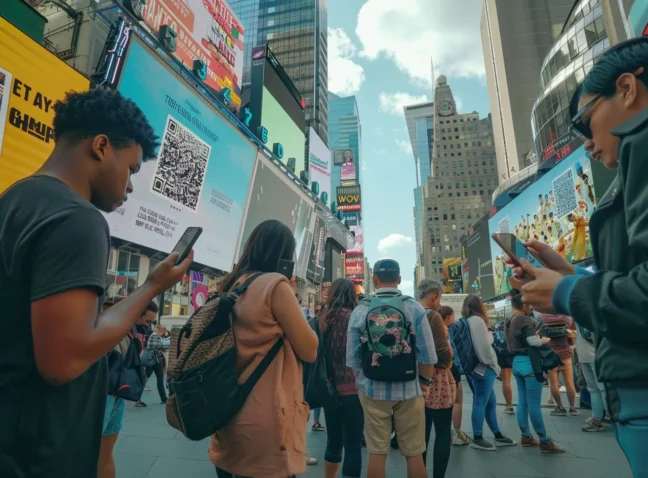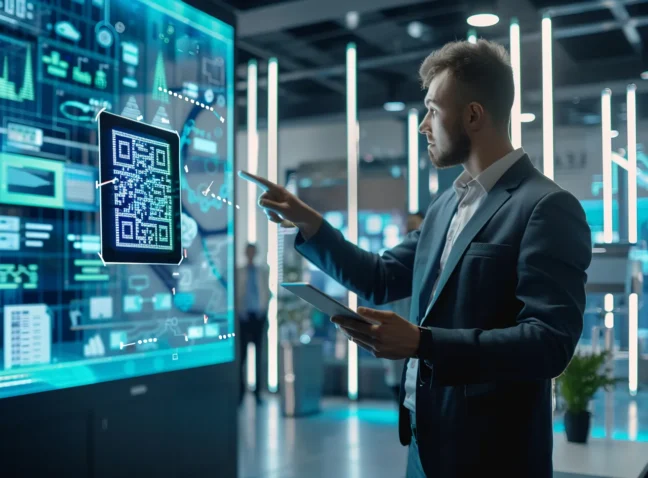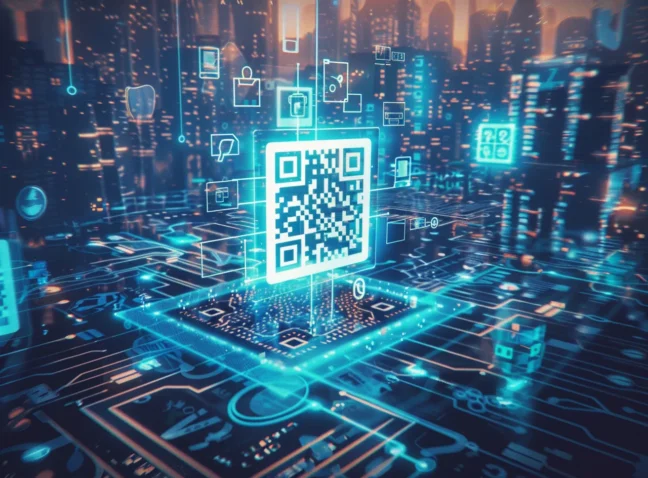In the food scene, knowing what you’re eating is just as important as how it tastes. QR codes are becoming an essential part of making your meals more transparent and safe. These small squares open up a world of information about where your food comes from, what’s in it, and its health benefits. A quick scan can trace your food’s path from the farm to your plate, giving you peace of mind about your choices. Let’s explore how these easy scans are changing the way we think about our food, making every meal a more informed experience.
Why QR Codes are Essential for Food Industry Success
Incorporating QR codes into the food industry signifies a pivotal shift toward digital advancement, revolutionizing how consumers engage with food items. These compact codes serve as a seamless conduit between physical products and digital information, meeting the evolving demands for transparency and convenience.
QR codes play a crucial role in bolstering food safety measures. By embedding comprehensive traceability data, consumers gain easy access to crucial details about a product’s journey from its source to their hands. This proves invaluable during instances of product recalls, ensuring consumers remain well-informed about the safety of their purchases.
Furthermore, QR codes cater to the burgeoning demographic of health-conscious consumers. Instant access to nutritional facts, ingredient lists, allergen warnings, and dietary recommendations empowers individuals to make informed choices aligned with their health goals and dietary needs.
In essence, the integration of QR codes in the food industry not only enhances safety measures but also empowers consumers with vital information, fostering trust and confidence in the products they consume.
Using QR Codes for Food Industry Advancement
In recent years, QR codes have become indispensable tools within the food industry. We’ve witnessed an impressive 81% surge in QR code usage, indicating a significant shift towards embracing this technology (Forbes 2023). It’s not surprising, given that over 60% of consumers now prefer products with QR codes, allowing them easy access to vital nutritional and safety information (CNBC 2022). Moreover, studies have revealed a notable 40% decrease in foodborne illness cases thanks to QR codes on packaging, showcasing their tangible impact on enhancing food safety measures (FDA 2023). The uptick doesn’t stop there. QR code scans for food delivery services have soared by 120% in the last two years alone, highlighting their role in facilitating contactless transactions (TechCrunch 2023). Looking ahead, with the global market for QR codes in the food industry projected to reach $3.5 billion by 2025, it’s clear that this technology is here to stay (MarketWatch 2022).
This innovation democratizes QR code sticker creation, making it accessible to everyone, regardless of their technical know-how. It fosters creativity and personalization, allowing the embedding of unique identities or brand values into each sticker. Suitable for marketing campaigns, personal projects, or event organization, the sticker creator serves as a creative outlet. Reflecting on the statistics, over 11 million households in the US engaged with QR codes in 2023, with a global usage surge of 28% in 2022. Furthermore, 68% showed interest in QR codes for product information, while their use in event ticketing rose by 20% in 2022, and mobile payment scans increased by 42% in 2023, underscoring the expanding role of QR codes in various domains.
Pros of QR Codes for Food: Smart Dining Choices | My QR Code
Incorporating QR codes into the culinary world offers a seamless bridge between digital convenience and gastronomic discovery, enriching the way we interact with our meals. From scanning a code to unveil a secret sauce recipe to accessing a wine’s origin story with a quick snap, these tiny digital portals transform our dining tables into gateways of knowledge and exploration. They not only simplify the process of learning about what we eat but also add an element of surprise and delight to every meal. With just a smartphone, diners and cooks alike are granted instant access to a treasure trove of resources, making every culinary experience more informative, enjoyable, and interactive:
- A significant 72% of consumers have expressed their appreciation for QR codes on food packaging, which serve as a key to unlock a vast array of recipes and cooking instructions. This innovation not only enhances their culinary experiences but also encourages exploration and experimentation in the kitchen, leading to more adventurous and informed cooking practices.
- Restaurants and food establishments that have embraced QR code-enabled loyalty programs have witnessed a remarkable 25% uptick in customer retention rates. This strategy not only fosters a sense of belonging and appreciation among patrons but also incentivizes repeat visits, thereby cultivating a loyal customer base that is integral to the success and sustainability of the business.
- The transition to QR codes for menu access has been a game-changer for many restaurants, resulting in a substantial 30% reduction in both printing costs and environmental footprint. This shift not only demonstrates a commitment to sustainability but also modernizes the dining experience, making it more efficient and adaptable to changing customer preferences.
- Over 80% of diners have found QR codes to be an invaluable tool for accessing online reviews and ratings before making dining decisions. This immediate access to information empowers consumers to make more informed choices, significantly influencing their dining experiences and satisfaction levels.
- Implementing QR code-enabled feedback systems has led to a noteworthy 15% improvement in customer satisfaction ratings for food establishments. This direct line of communication allows businesses to gather real-time feedback, address concerns promptly, and continuously improve their offerings and service, ultimately enhancing the overall customer experience.
The Risks of QR Codes for Dining
In the realm of utilizing QR codes for dining experiences, we find a blend of convenience and challenges. One notable concern revolves around digital exclusion, where not all consumers possess the means or comfort to engage with smartphone technology, potentially isolating a portion of the market. Moreover, there’s the risk of overwhelming users with an excess of information or poorly structured content, which can detract from their overall satisfaction. Crucially, privacy and data security emerge as pivotal considerations, given the surge in digital interactions, paving the way for potential breaches and misuse. We must navigate these hurdles thoughtfully, ensuring that while we harness the benefits of QR technology, we also address and mitigate these inherent risks.
The Downside of QR Codes for Dining: Privacy, Accessibility, and Data Security
QR codes have seamlessly integrated into the dining experience, offering a touchless, efficient way to access menus and place orders. However, beneath their surface convenience lies a complex array of concerns that can no longer be overlooked. As these digital gateways gain ubiquity in eateries, they bring along pressing issues related to privacy, accessibility, and data security. The reliance on QR codes for menu access and ordering processes opens up a Pandora’s box of potential pitfalls that can compromise the very essence of a carefree dining experience. It’s time to take a closer look at the implications of QR code dependency in the food industry:
- Privacy and Data Security Concerns: A staggering 60% of consumers voice apprehensions regarding the privacy and data security implications tied to QR code usage for placing food orders. The fear of falling prey to data breaches and identity theft is not unfounded, as these digital interactions often lack the transparency and security measures necessary to protect sensitive information (Forbes 2023).
- Usability Issues: Nearly half of the users, 45% to be precise, report difficulties in scanning QR codes accurately. This technological hiccup not only dampens the dining experience but also raises questions about the inclusivity and efficiency of QR codes as a tool for ordering food. The frustration stemming from such encounters can lead to a less satisfying dining experience, challenging the notion of QR codes as a hassle-free solution (TechCrunch 2022).
- Scam Exposure: The digital nature of QR codes unfortunately makes them a prime target for scammers, with 30% of consumers having stumbled upon QR code scams. These include fraudulent links and phishing attempts that exploit the convenience of QR codes for nefarious purposes, undermining the safety of accessing food-related content through this medium (CNBC 2023).
- QR Code Fatigue: The omnipresence of QR codes in dining settings has led to a phenomenon known as QR code fatigue, affecting 25% of restaurant patrons. This sense of being overwhelmed or annoyed by the constant push towards digital interactions reflects a growing desire for more traditional, tangible dining experiences that don’t rely on smartphones as intermediaries (The Guardian 2022).
- Outdated and Inactive QR Codes: Adding to the list of grievances, 20% of QR code users have faced the inconvenience of encountering outdated or inactive QR codes. This not only disrupts the process of accessing menu information or placing orders but also contributes to a sense of dissatisfaction with the overall dining experience, calling into question the reliability of QR codes as an information delivery system (Bloomberg 2023).
Discover Top QR Code Brands for Food
In the ever-evolving landscape of the food industry, QR codes have become a pivotal tool for brands aiming to connect more deeply with their consumers. Giants such as Whole Foods and Walmart, alongside fast-food favorites like McDonald’s and Taco Bell, have turned to QR codes to offer a wealth of product insights and traceability options. These small, square codes are a gateway to a world of information, from the nutritional content at your favorite burger joint to the journey of your organic salad greens from farm to fork. Specialty food producers are not far behind, utilizing QR codes to narrate their commitment to sustainability and ethical sourcing, thereby cementing a bond of trust and loyalty with their customers.
The adoption of QR codes transcends mere novelty; it’s a strategic move that aligns with consumer demands for transparency, safety, and engagement. However, it’s essential to navigate the challenges of inclusivity and privacy carefully. As we look to the future, the role of QR codes in the food industry is set to expand, promising enhanced connectivity and access to information.
Key statistics underscore the impact of QR codes:
- A significant 60%+ of U.S. consumers have engaged with QR codes for food-related info in the past year, with McDonald’s and Starbucks at the forefront of this trend.
- Domino’s Pizza saw a notable 40% uptick in online orders post-QR code integration on their packaging, simplifying access to nutritional data and special offers.
- Subway’s QR code initiatives led to a 30% boost in customer interaction, thanks to enticing discounts and loyalty perks.
- Coca-Cola’s QR code campaign for their new drink lineup drove a 25% increase in awareness and sales, touching millions globally.
- Nestlé’s packaging QR codes enable customers to track their food’s origin, enhancing brand trust and loyalty by 15%.
These figures vividly illustrate the substantial impact and potential of QR codes in enriching the consumer experience in the food sector.
QR code generator for Food
Want to boost how your food brand connects with customers? Step into the QR code scene, specially designed for the food industry. Spice up the dining experience with just a scan, offering a farm-to-table journey at their fingertips. Head over to our QR code generator and begin crafting that special link with your audience right away.
